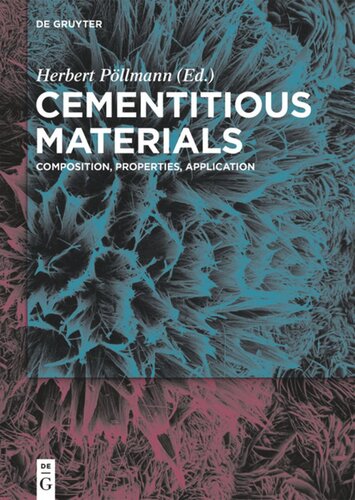

Most ebook files are in PDF format, so you can easily read them using various software such as Foxit Reader or directly on the Google Chrome browser.
Some ebook files are released by publishers in other formats such as .awz, .mobi, .epub, .fb2, etc. You may need to install specific software to read these formats on mobile/PC, such as Calibre.
Please read the tutorial at this link: https://ebookbell.com/faq
We offer FREE conversion to the popular formats you request; however, this may take some time. Therefore, right after payment, please email us, and we will try to provide the service as quickly as possible.
For some exceptional file formats or broken links (if any), please refrain from opening any disputes. Instead, email us first, and we will try to assist within a maximum of 6 hours.
EbookBell Team

4.7
46 reviewsAside from water the materials which are used by mankind in highest quantities arecementitious materials and concrete. This book shows how the quality of the technical product depends on mineral phases and their reactions during the hydration and strengthening process. Additives and admixtures infl uence the course of hydration and the properties. Options of reducing the CO2-production in cementitious materials are presented and numerous examples of unhydrous and hydrous phases and their formation conditions are discussed.
This editorial work consists of four parts including cement composition and hydration, Special cement and binder mineral phases, Cementitious and binder materials, and Measurement and properties. Every part contains different contributions and covers a broad range within the area.
Contents
Part I: Cement composition and hydration
Diffraction and crystallography applied to anhydrous cements
Diffraction and crystallography applied to hydrating cements
Synthesis of highly reactive pure cement phases
Thermodynamic modelling of cement hydration: Portland cements – blended cements – calcium sulfoaluminate cements
Part II: Special cement and binder mineral phases
Role of hydrotalcite-type layered double hydroxides in delayed pozzolanic reactions and their bearing on mortar dating
Setting control of CAC by substituted acetic acids and crystal structures of their calcium salts
Crystallography and crystal chemistry of AFm phases related to cement chemistry
Part III: Cementitious and binder materials
Chemistry, design and application of hybrid alkali activated binders
Binding materials based on calcium sulphates
Magnesia building material (Sorel cement) – from basics to application
New CO2-reduced cementitious systems
Composition and properties of ternary binders
Part IV: Measurement and properties
Characterization of microstructural properties of Portland cements by analytical scanning electron microscopy
Correlating XRD data with technological properties
No cement production without refractories